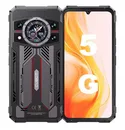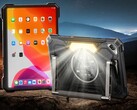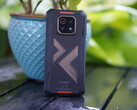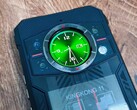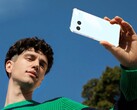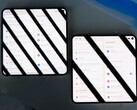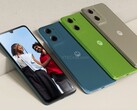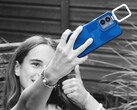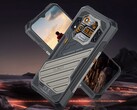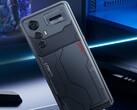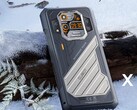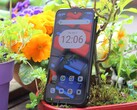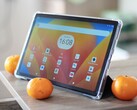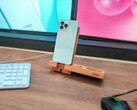Verdict on the Cubot KingKong 11
The Cubot KingKong 11 is available at a reasonable price. For this, you get a mid-range SoC, good battery life, and a reasonably bright screen without PWM, but with a strong blue tint.
The waterproof chassis seems a bit outdated because it (once again) comes in an angular industrial design. It fits quite well in the hand, but is heavy in the long run.
The cameras are more of a makeshift solution, even though there is a dedicated macro and wide-angle camera. The night vision camera works well and offers real added value in some scenarios.
The Wi-Fi is not particularly fast, and the lack of sustainability efforts and the absence of any promise of updates should also be taken into account when making a purchase decision.
Overall, Cubot offers a current mid-range phone that is protected against the elements and drops and costs little. However, buyers will have to make some compromises.
Pros
Cons
Price and availability
The Cubot KingKong 11 is already available for around $244 on Aliexpress.
It will soon be available in Cubot's shop at Amazon.
Table of Contents
- Verdict on the Cubot KingKong 11
- Specifications
- Case and features – Robust with a second screen
- Communication and operation – No Wi-Fi monster
- Software and sustainability – Little prospect of updates
- Cameras – Including night vision
- Display – Can have a blue tint
- Performance, emissions, and battery life – Good power for little money
- Notebookcheck overall rating
- Possible alternatives in comparison
Specifications
Case and features – Robust with a second screen
The Cubot KingKong 11 is only available in one color: black with red accents on the back. The design is angular with visible screws.
It fits reasonably well in the hand, but at 419 grams, it is not a particularly light smartphone. However, it can be used in more uncomfortable environments, as it has been tested according to IP68/IP69K and MIL-STD-810H and should therefore be able to withstand water, dust, and drops onto the floor quite well. The manufacturer specifies a diving depth of up to 5 meters in fresh water.
A special feature is the circular second display on the back. It can show the time, be used as a viewfinder for selfies via the rear camera, display notifications or a compass, and be used as a music player. It is a touchscreen.
NFC for contactless payment or authentication is available.
The SIM slot can hold either two SIM cards or one SIM and one microSD card for memory expansion. The latter offers data rates roughly on par with similar phones.
| SD Card Reader - average JPG Copy Test (av. of 3 runs) | |
| Oukitel WP35 (Angelbird V60) | |
| Doogee Blade 20 Turbo (Angelbird V60) | |
| Samsung Galaxy XCover 7 (Angelbird V60) | |
| Cubot KingKong 11 (Angelbird V60) | |
| Average of class Smartphone (5.72 - 58.9, n=68, last 2 years) | |
Cross Platform Disk Test (CPDT)
Communication and operation – No Wi-Fi monster
WiFi 5 is the fastest standard for wireless networks and, in our test with the reference router Asus ROG Rapture AXE11000, it shows reasonably stable transfer rates, but is otherwise rather slow.
In terms of mobile communications, all the necessary mobile frequencies for operation within many countries and also 5G are available.
The screen offers up to 120 Hz and responds very quickly to input. The touchscreen is reliable and remains sensitive even in the corners. On the left side of the case, there is a button which can be freely assigned.
| Networking | |
| Cubot KingKong 11 | |
| iperf3 transmit AXE11000 | |
| iperf3 receive AXE11000 | |
| Doogee Blade 20 Turbo | |
| iperf3 transmit AXE11000 | |
| iperf3 receive AXE11000 | |
| Oukitel WP35 | |
| iperf3 transmit AXE11000 | |
| iperf3 receive AXE11000 | |
| Samsung Galaxy XCover 7 | |
| iperf3 transmit AXE11000 | |
| iperf3 receive AXE11000 | |
| Average 802.11 a/b/g/n/ac | |
| iperf3 transmit AXE11000 | |
| iperf3 receive AXE11000 | |
| Average of class Smartphone | |
| iperf3 transmit AXE11000 | |
| iperf3 receive AXE11000 | |
Software and sustainability – Little prospect of updates
Android 15 is installed as the OS on the robust mobile phone. Security updates are from June 2025 and therefore already somewhat older at the time of testing. Furthermore, there is no statement as to how long the phone will receive software updates.
Plastic is also used in the packaging, and there are no visible sustainability efforts.
Cameras – Including night vision
The main camera has a resolution of 108 megapixels. The images appear cool and have dynamic range issues in bright areas. The sharpness is also only average.
The camera system is versatile: there is a macro camera that can also take wide-angle shots. It has a resolution of 8 megapixels and requires a lot of light for good shots. Multi-stage zoom is not possible; you select the respective camera in the menu.
In addition, a night vision camera is integrated, which allows black-and-white photos even in complete darkness. This is actually an interesting extra, especially since you can also use the phone as a night vision device – but only with limited range
Image comparison
Choose a scene and navigate within the first image. One click changes the position on touchscreens. One click on the zoomed-in image opens the original in a new window. The first image shows the scaled photograph of the test device.
Prim. camera - flowersPrim. camera - outdoorsPrim. camera - low light

Display – Can have a blue tint
The IPS screen measures 6.7 inches in diameter and offers a maximum brightness of 610 cd/m² in our test, which is quite good for an affordable outdoor phone.
However, even more brightness may be necessary for reliable outdoor readability, especially on very bright days.
The color representation suffers somewhat from a strong blue cast, but at least the screen does not show PWM flickering.
| |||||||||||||||||||||||||
Brightness Distribution: 85 %
Center on Battery: 586 cd/m²
Contrast: 1628:1 (Black: 0.36 cd/m²)
ΔE ColorChecker Calman: 6.49 | ∀{0.5-29.43 Ø4.77}
ΔE Greyscale Calman: 8 | ∀{0.09-98 Ø5}
100% sRGB (Calman 2D)
Gamma: 2.252
CCT: 9382 K
| Cubot KingKong 11 IPS, 2400x1080, 6.7" | Doogee Blade 20 Turbo IPS, 1612x720, 6.6" | Oukitel WP35 IPS, 2408x1080, 6.6" | Samsung Galaxy XCover 7 PLS, 2408x1080, 6.6" | |
|---|---|---|---|---|
| Screen | -14% | -12% | -1% | |
| Brightness middle (cd/m²) | 586 | 475 -19% | 552 -6% | 600 2% |
| Brightness (cd/m²) | 569 | 441 -22% | 549 -4% | 561 -1% |
| Brightness Distribution (%) | 85 | 88 4% | 94 11% | 89 5% |
| Black Level * (cd/m²) | 0.36 | 0.43 -19% | 0.42 -17% | 0.57 -58% |
| Contrast (:1) | 1628 | 1105 -32% | 1314 -19% | 1053 -35% |
| Colorchecker dE 2000 * | 6.49 | 7.83 -21% | 7.22 -11% | 5.07 22% |
| Colorchecker dE 2000 max. * | 10.9 | 11.09 -2% | 13.09 -20% | 8.1 26% |
| Greyscale dE 2000 * | 8 | 8.3 -4% | 10.1 -26% | 5.7 29% |
| Gamma | 2.252 98% | 2.68 82% | 1.785 123% | 2.249 98% |
| CCT | 9382 69% | 8806 74% | 9036 72% | 8162 80% |
* ... smaller is better
Screen Flickering / PWM (Pulse-Width Modulation)
| Screen flickering / PWM not detected | |||
In comparison: 53 % of all tested devices do not use PWM to dim the display. If PWM was detected, an average of 8091 (minimum: 5 - maximum: 343500) Hz was measured. | |||
Display Response Times
| ↔ Response Time Black to White | ||
|---|---|---|
| 12.3 ms ... rise ↗ and fall ↘ combined | ↗ 9.3 ms rise | |
| ↘ 3 ms fall | ||
| The screen shows good response rates in our tests, but may be too slow for competitive gamers. In comparison, all tested devices range from 0.1 (minimum) to 240 (maximum) ms. » 32 % of all devices are better. This means that the measured response time is better than the average of all tested devices (20.2 ms). | ||
| ↔ Response Time 50% Grey to 80% Grey | ||
| 27 ms ... rise ↗ and fall ↘ combined | ↗ 17 ms rise | |
| ↘ 10 ms fall | ||
| The screen shows relatively slow response rates in our tests and may be too slow for gamers. In comparison, all tested devices range from 0.165 (minimum) to 636 (maximum) ms. » 35 % of all devices are better. This means that the measured response time is better than the average of all tested devices (31.6 ms). | ||
Performance, emissions, and battery life – Good power for little money
The MediaTek Dimensity 7020 SoC is designed for affordable mid-range phones, which is exactly where the Cubot KingKong 11 fits in. Other outdoor smartphones are often slower, but smooth operation is usually possible with less demanding apps.
In terms of graphics, many standards are not supported, so modern mobile games may not run.
The memory is fast, so transferring data or loading apps takes little time.
The temperature development on the case is moderate, unfortunately the 3DMark stress tests do not run on the smartphone.
The mono speaker on the back can get reasonably loud, but sounds quite treble-heavy. It's more fun to connect external audio devices. This works without any problems and is also possible in good quality thanks to many supported Bluetooth audio codecs.
The battery is large at 10,200 mAh and also enables quite good runtimes of up to 21:13 hours in our Wi-Fi test. This should easily get you through a long day of hiking and, with moderate use, even several days in the wilderness. The phone can be charged at a maximum of 33 watts, resulting in charging times of up to 3 hours or more.
| Cubot KingKong 11 | Doogee Blade 20 Turbo | Oukitel WP35 | Samsung Galaxy XCover 7 | Average 256 GB UFS 3.1 Flash | Average of class Smartphone | |
|---|---|---|---|---|---|---|
| AndroBench 3-5 | -20% | -87% | -42% | 2% | 23% | |
| Sequential Read 256KB (MB/s) | 1844.1 | 1873.2 2% | 292 -84% | 488.2 -74% | 1757 ? -5% | 2243 ? 22% |
| Sequential Write 256KB (MB/s) | 1488.7 | 1250.2 -16% | 149.5 -90% | 501 -66% | 1204 ? -19% | 1865 ? 25% |
| Random Read 4KB (MB/s) | 271.1 | 280.9 4% | 61.7 -77% | 212 -22% | 287 ? 6% | 296 ? 9% |
| Random Write 4KB (MB/s) | 251 | 72.4 -71% | 9.4 -96% | 240.2 -4% | 318 ? 27% | 339 ? 35% |
(+) The maximum temperature on the upper side is 38.9 °C / 102 F, compared to the average of 35.2 °C / 95 F, ranging from 21.9 to 247 °C for the class Smartphone.
(+) The bottom heats up to a maximum of 35.6 °C / 96 F, compared to the average of 34 °C / 93 F
(+) In idle usage, the average temperature for the upper side is 22.4 °C / 72 F, compared to the device average of 32.9 °C / 91 F.
Cubot KingKong 11 audio analysis
(+) | speakers can play relatively loud (87.7 dB)
Bass 100 - 315 Hz
(-) | nearly no bass - on average 27.3% lower than median
(±) | linearity of bass is average (13% delta to prev. frequency)
Mids 400 - 2000 Hz
(+) | balanced mids - only 4.7% away from median
(+) | mids are linear (6.1% delta to prev. frequency)
Highs 2 - 16 kHz
(+) | balanced highs - only 4.9% away from median
(±) | linearity of highs is average (7.9% delta to prev. frequency)
Overall 100 - 16.000 Hz
(±) | linearity of overall sound is average (20.9% difference to median)
Compared to same class
» 38% of all tested devices in this class were better, 8% similar, 54% worse
» The best had a delta of 11%, average was 35%, worst was 134%
Compared to all devices tested
» 56% of all tested devices were better, 8% similar, 36% worse
» The best had a delta of 4%, average was 24%, worst was 134%
Samsung Galaxy XCover 7 audio analysis
(+) | speakers can play relatively loud (84.3 dB)
Bass 100 - 315 Hz
(-) | nearly no bass - on average 25.6% lower than median
(±) | linearity of bass is average (10.8% delta to prev. frequency)
Mids 400 - 2000 Hz
(±) | higher mids - on average 6.3% higher than median
(±) | linearity of mids is average (7% delta to prev. frequency)
Highs 2 - 16 kHz
(±) | higher highs - on average 5.4% higher than median
(+) | highs are linear (6.1% delta to prev. frequency)
Overall 100 - 16.000 Hz
(±) | linearity of overall sound is average (20.9% difference to median)
Compared to same class
» 38% of all tested devices in this class were better, 8% similar, 54% worse
» The best had a delta of 11%, average was 35%, worst was 134%
Compared to all devices tested
» 56% of all tested devices were better, 8% similar, 36% worse
» The best had a delta of 4%, average was 24%, worst was 134%
| Cubot KingKong 11 10200 mAh | Doogee Blade 20 Turbo 10300 mAh | Oukitel WP35 11000 mAh | Samsung Galaxy XCover 7 4050 mAh | |
|---|---|---|---|---|
| Battery runtime | 10% | 31% | -37% | |
| WiFi v1.3 (h) | 21.2 | 23.3 10% | 27.7 31% | 13.4 -37% |
| Reader / Idle (h) | 23.4 | |||
| H.264 (h) | 14.4 | |||
| Load (h) | 4.7 |
Notebookcheck overall rating
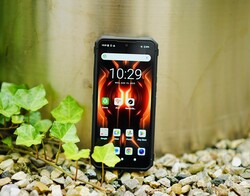
The Cubot KingKong 11 is an affordable outdoor smartphone with unusual features.
However, if you are looking for update guarantees and sustainability, this phone will not satisfy you.
Cubot KingKong 11
- 08/18/2025 v8
Florian Schmitt
Possible alternatives in comparison
Image | Model / Review | Price | Weight | Drive | Display |
|---|---|---|---|---|---|
| Cubot KingKong 11 MediaTek Dimensity 7020 ⎘ IMG BXM-8-256 ⎘ 16 GB Memory, 256 GB | Amazon: 1. $8.67 NEOYUKL Privacy Screen Prote... 2. $10.19 [3 Pack] Compatible for Cubo... 3. $7.99 for Cubot Kingkong 11 (6.72"... List Price: 300€ | 419 g | 256 GB UFS 3.1 Flash | 6.72" 2400x1080 392 PPI IPS | |
| Doogee Blade 20 Turbo MediaTek Dimensity 7050 ⎘ ARM Mali-G68 MP4 ⎘ 8 GB Memory, 256 GB | Amazon: $246.99 List Price: 379€ | 331 g | 256 GB UFS 3.1 Flash | 6.60" 1612x720 267 PPI IPS | |
| Oukitel WP35 MediaTek Dimensity 6100+ ⎘ ARM Mali-G57 MP2 ⎘ 8 GB Memory, 256 GB eMMC | Amazon: 1. $37.88 SiuVorZhi LCD Display Compat... 2. $37.99 SWARK New LCD Display Replac... 3. $32.99 SECRETIGER LCD Screen Displa... List Price: 285€ | 360 g | 256 GB eMMC 5.1 Flash | 6.60" 2408x1080 400 PPI IPS | |
| Samsung Galaxy XCover 7 MediaTek Dimensity 6100+ ⎘ ARM Mali-G57 MP2 ⎘ 6 GB Memory, 128 GB UFS 2.1 | Amazon: 1. $6.98 3 Pack Tempered Glass Screen... 2. $6.99 Supershieldz (2 Pack) Design... 3. $7.99 Suttkue for Samsung Galaxy X... List Price: 359€ | 240 g | 128 GB UFS 2.1 Flash | 6.60" 2408x1080 400 PPI PLS |
Transparency
The selection of devices to be reviewed is made by our editorial team. The test sample was provided to the author as a loan by the manufacturer or retailer for the purpose of this review. The lender had no influence on this review, nor did the manufacturer receive a copy of this review before publication. There was no obligation to publish this review. As an independent media company, Notebookcheck is not subjected to the authority of manufacturers, retailers or publishers.
This is how Notebookcheck is testing
Every year, Notebookcheck independently reviews hundreds of laptops and smartphones using standardized procedures to ensure that all results are comparable. We have continuously developed our test methods for around 20 years and set industry standards in the process. In our test labs, high-quality measuring equipment is utilized by experienced technicians and editors. These tests involve a multi-stage validation process. Our complex rating system is based on hundreds of well-founded measurements and benchmarks, which maintains objectivity. Further information on our test methods can be found here.




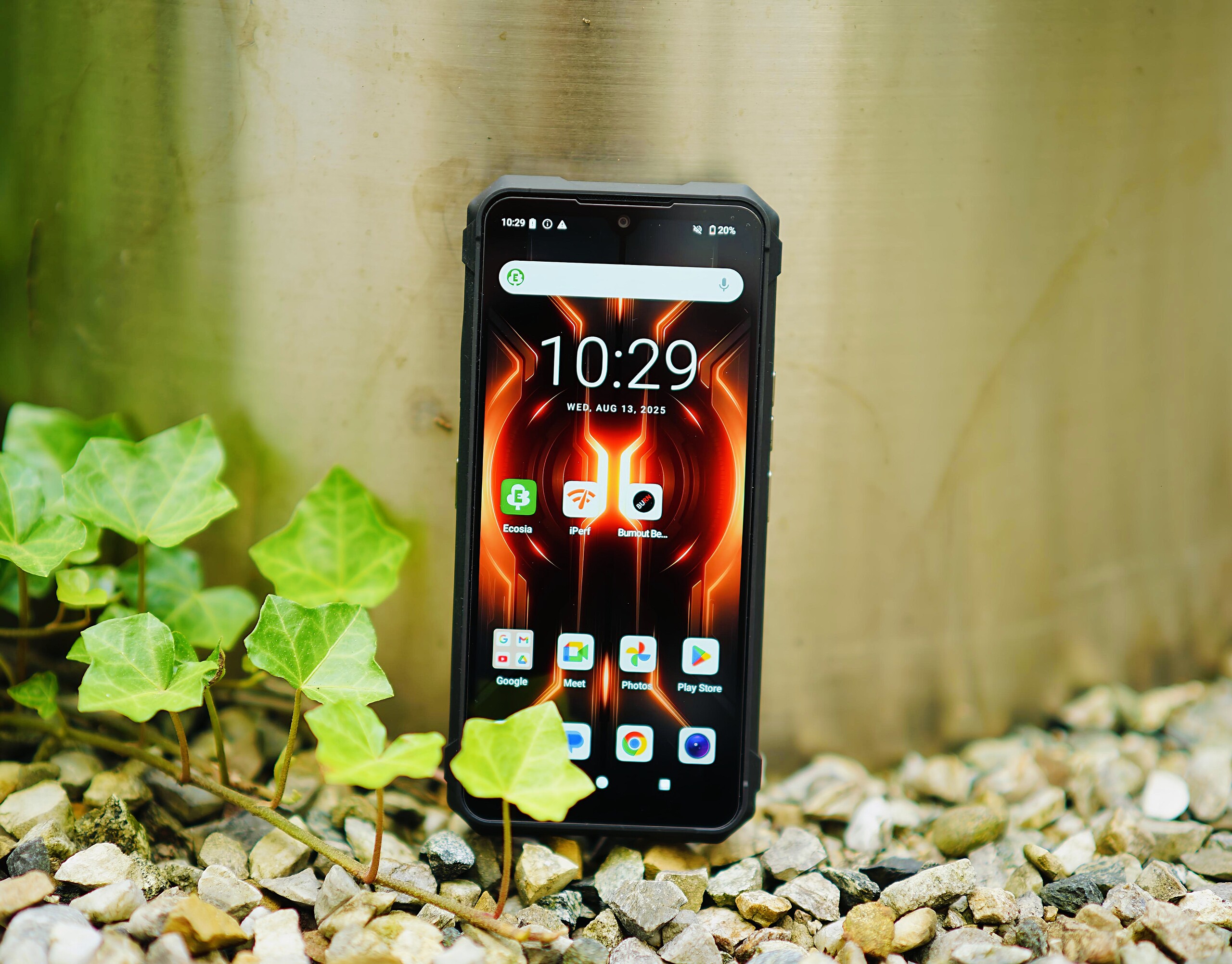

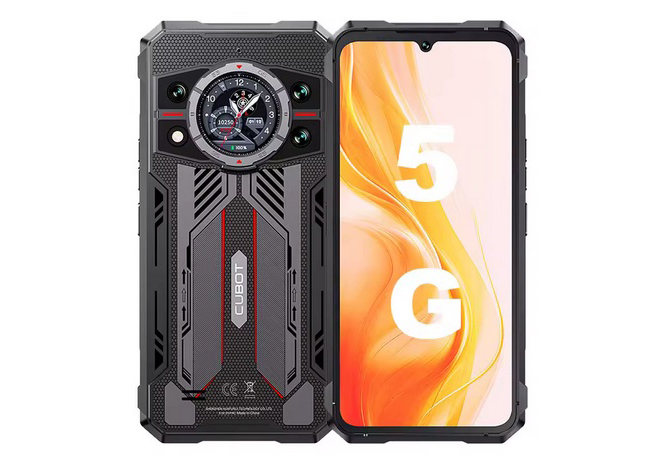
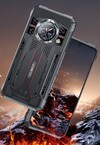


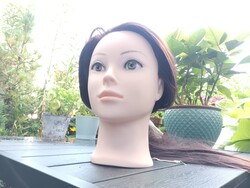

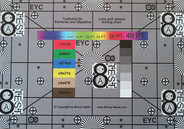



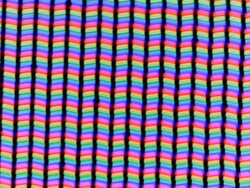
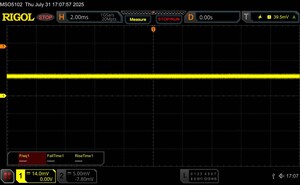
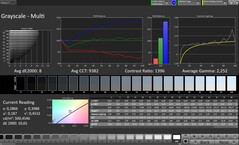
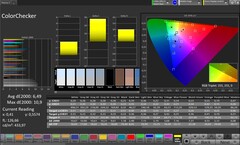
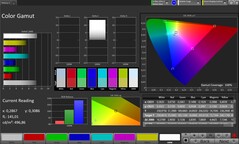
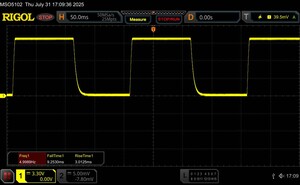
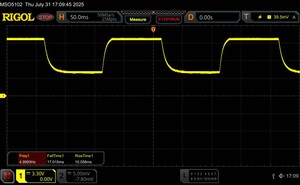
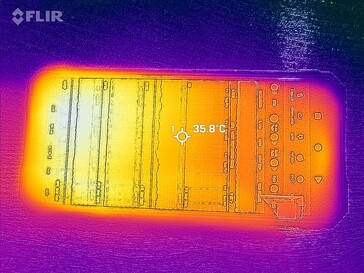

 Total Sustainability Score:
Total Sustainability Score: 